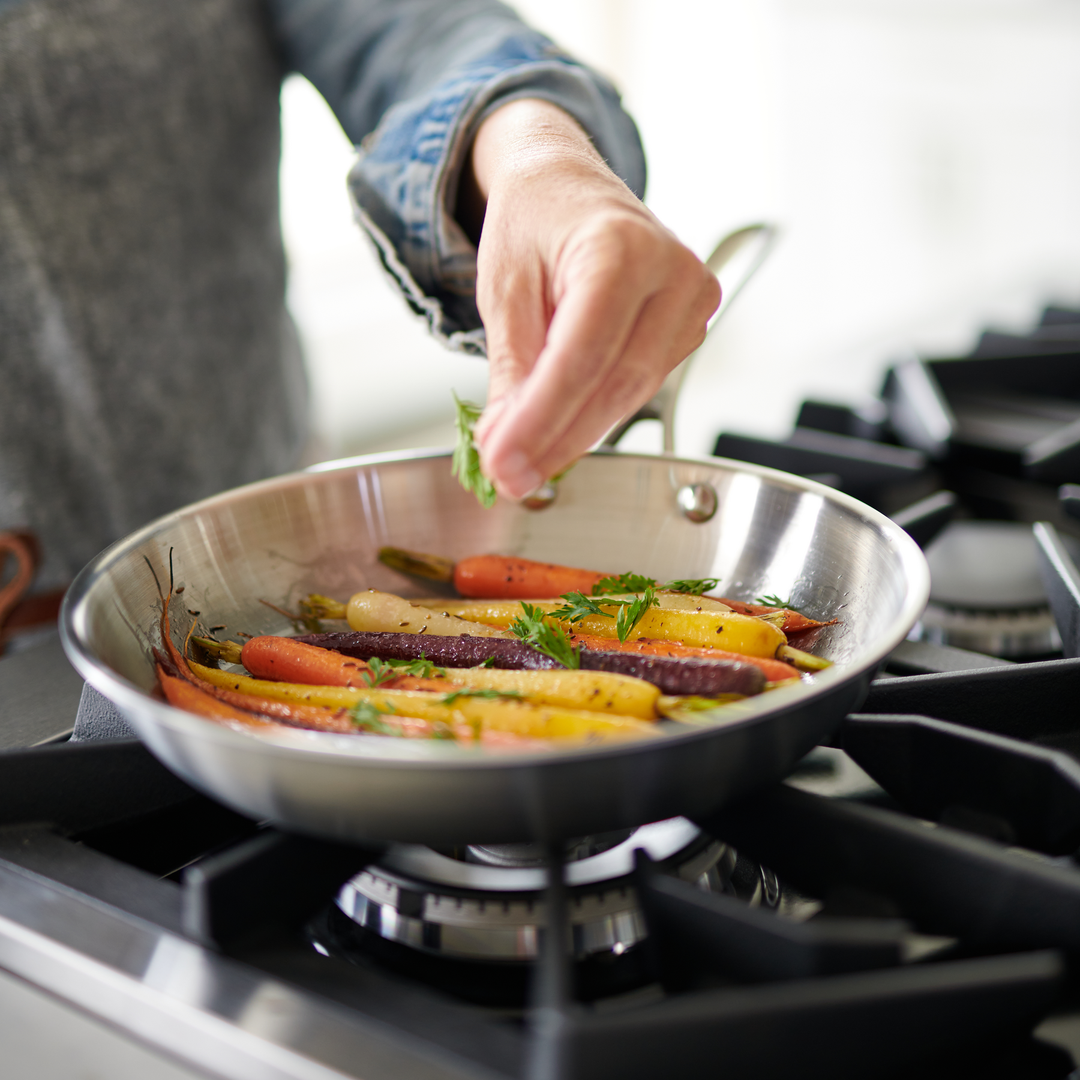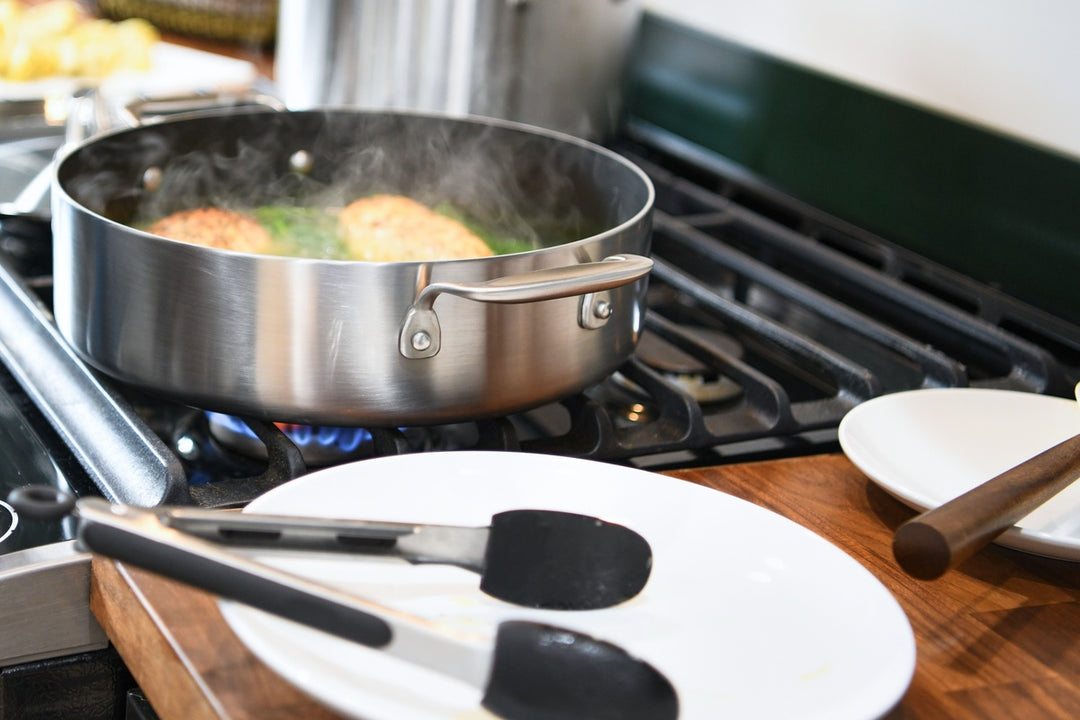Stainless Steel vs. Nonstick—Why you need both!

Looking to buy new cookware but can’t decide how nonstick and stainless steel can help you build the kitchen toolkit of your dreams? You’ve come to the right place.
For a lot of people, cookware is not only an investment, but a set of tools that allow them to express themselves and show love to their family and friends through food. At American Kitchen, our cookware is as durable and dependable as they come. They’re the pieces you want to pass down because you can. So, when it comes to picking cookware, it’s important to be thoughtful about the pieces you choose and how they will fit into your life.
Team Stainless Steel
It’s a tried-and-true classic for a reason—the sky is the limit with stainless steel because you can cook almost anything in it. It’s the essential tool you need to sear meat, and it takes the higher temperatures and amounts of fat (like oil or butter) to do the job. As an added bonus, using both high heat and fats will prevent your food from sticking to the surface. Some dishes like a perfectly crusted pork chop are impossible to get with nonstick cookware.
Since you don’t have to baby any type of coating, you can also use nonstick cooking sprays, cook acidic foods, and use metal utensils with stainless steel cookware.
One drawback is that cleanup isn’t as easy as it is on nonstick surfaces. It does take a little elbow grease to get these pieces sparkling again, especially if you burn some food (good news! Our cleaning guide will tell you everything you need to know). [Link to blog post “How to Clean Stainless Steel Cookware”]
Team Nonstick
There’s a reason why nonstick cookware is so popular—it’s easy to use and easy to clean. You only need a minimum amount of butter or oil to slide a perfectly cooked egg from pan to plate. It’s also the ideal sidekick for making pancakes, crepes, or delicate meats (like fish).
In order to preserve its coating, you’ll want to stick to cooking foods on low to medium heat. American Kitchen’s nonstick cookware has a stainless steel base and therefore is oven friendly up to 500 degrees Fahrenheit, but isn’t broiler compatible. You’ll also want to be more careful with the types of utensils you use (materials like silicone, wood or nylon are best). Staying away from metal utensils, nonstick cooking spray and super-acidic foods is essential as each can damage the nonstick coating. If the coating starts to flake off or is extremely scratched, it’s time to replace your cookware.
For even more details on both our stainless steel and nonstick cookware, check out our FAQ page.
The Verdict
For someone who cooks regularly, get the best of both worlds and mix and match a few pieces of stainless steel with nonstick cookware. One of the best things about American Kitchen is that you can buy cookware by the piece instead of in one huge set, so you can get the sizes and materials that best suit your cooking style (like an 8-inch nonstick skillet for grilled cheese sandwiches, a 10-inch nonstick skillet for omelets, and a 3-quart stainless steel saucepan for tomato sauce). Think about what dishes are in heavy rotation for you and those at your table and go from there.




